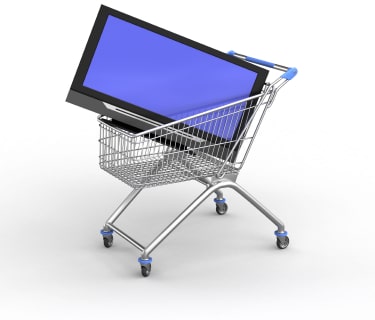Audiology: Practice Management was published in 2000 as part of an Audiology book “trilogy” edited by Ross Roeser, Mike Valente and myself. In that first edition, we egregiously took on the ambitious task of predicting the future of practice management. At least we were modest enough to prevail upon other, better positioned thinkers to make the predictions.{{1}}[[1]]Jerger JJ, Skafte MD, Kolind L. The future of audiology practice management. Chapter 21. In Hosford-Dunn H, Roeser R, & Valente, M. (2000). Audiology: Practice Management (1st Ed). NY: Thieme. pp 481-490.[[1]] One prognosticators was the remarkable Danish visionary Lars Kolind, who gave his formidable talents to Oticon during a critical period in the 1990s. Dr Kolind eventually moved on to manage other technologies, but his predictions for our field were prescient and deserve review in this ensuing series.
Lars Kolind’s Prediction I: Hearing healthcare provision is part of the retailing and service sectors in society. Therefore it will be influenced by some of the general trends affecting these sectors in the years ahead.
Perhaps more observation than prediction, but to a large extent it anticipated the present time in which Audiologists are viewed, and may view themselves, as retailers. By contrast, 20th century Audiology was not in the habit of adopting that view, though a few pioneering audiologists embraced it.{{2}}[[2]]Readers are encouraged to read the multi-part series in Wayne Staab’s section, in which a number of these pioneers give first-hand views of retail development in Audiology.[[2]] In my experience — and I certainly welcome other views here — Audiology saw itself as an academic discipline and a quasi-medical profession. That view is supported by the discipline’s move toward the AuD to make Audiology a “doctoring” profession. Back in the day, physicians did not retail services or products so it was natural for Audiology to promote a similar view to its practitioners. Even today, I’m not sure that most of us in Audiology know what is meant by “Retail and Service Sector,” so let’s start there for this first post.
Here’s one functional definition that seems to fit dispensing audiologists to a tee and may be what Dr Kolind meant by “Retail and Service Sector”:
RETAIL sector comprise of sales of goods or services to the end user. as such it is a service sector which connotes a service function in terms of distributing goods and services to end-user.
The US Office of Management and Budget parses hearing healthcare services and goods into different economic sectors, which making dispensing audiologists a mongrel group with one foot in the Retail Sector and one in Health Services. According to the 2007 North American Industry Classification System (NAICS){{3}}[[3]] NAICS is the the statistical arm of the US Office of Management and Budget for classifying and tracking US businesses according to the goods and services (G&S) they provide.[[3]], “hearing testing services by offices of audiologists”{{4}}[[4]]Classification 621340, Offices of Physical, Occupational and Speech Therapists, and Audiologists.[[4]]falls in Sector 62, the Health Care and Social Assistance Sector. Sector 62 is characterized by
“…services … delivered by trained professionals. All industries in the sector share this commonality of process, namely, labor inputs of health practitioners … with the requisite expertise. Many of the industries in the sector are defined based on the educational degree held by the practitioners included in the industry.”
and our more specific classification of 621340 is defined, for hearing purposes, as:
“… diagnosing and treating … hearing problems. These practitioners operate private or group practices in their own offices (e.g., centers, clinics) or in the facilities of others, such as hospitals or HMO medical centers.”
So far, so good. But once audiologists (or others) elect to “treat” with tangible products such as hearing aids, they wander into Sector 44, the Retail Trade Sector, in the good company of other healthcare providers such as pharmacists. When our transactions include hearing aids,{{5}}[[5]]NAIC code 446199, Hearing Aid Stores.[[5]] there is no doubt that we belong in Sector 44, as we are
“engaged in retailing merchandise, generally without transformation, and rendering services incidental to the sale of merchandise.” and are ” organized to sell merchandise in small quantities to the general public….[and] engaged in the provision of after-sales services, such as repair.”
Dr. Kolind’s first prediction seems on target in 2012. Audiologists and non-audiology hearing health providers are engaged in providing services and products that fit snugly into the general category of “Retail and Services” Sector(s). But here’s the rub: Costco, Walmart, hi-Heathinnovations, and a bunch of others are shoe-horned into Sector 44 right alongside us. Consider what’s included in the “nonstore retailers” group in Sector 44:
“…organized to serve the general public. …The establishments of this subsector reach customers and market merchandise with methods, such as the broadcasting of “infomercials,” the broadcasting and publishing of direct-response advertising, the publishing of paper and electronic catalogs, door-to-door solicitation, in-home demonstration, selling from portable stalls (street vendors, except food), and distribution through vending machines. Establishments engaged in the direct sale (nonstore) of products, such as home heating oil dealers and home delivery newspaper routes are included here.”
My goodness, to think we became a doctoring profession so that we could be classed with home heating oil dealers. In that context, those one-size-fits-none, over-the-counter hearing aids begin to make some sense. Clearly, retailing is not for sissies. Stay tuned for future posts in this series when we look at Dr. Kolind’s other predictions.
photo courtesy of stockingcash.com







Thank you Holly for addressing a polarizing issue…….looking forward to Part 2!